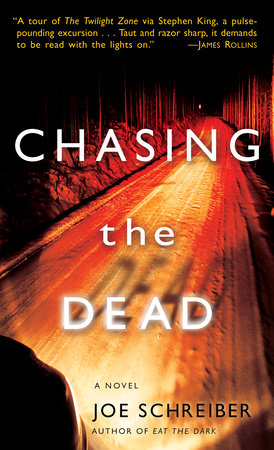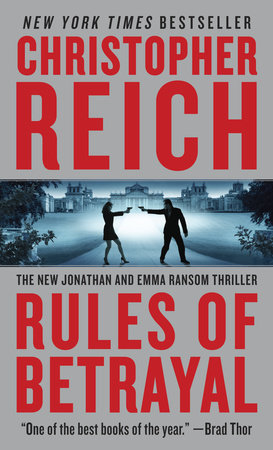Author Q&A
The basis of The Assassins Gallery is an assassination plot directed against President Franklin D. Roosevelt. It brings two protagonists—an unexpected assassin and her equally unlikely adversary, a somewhat rotund professor and weapons instructor—against each other with surprising consequences. Did either of these characters have specific, real-world historical counterparts? If so, who were they? And if not, what was your basis for these characters.
A few years ago, I spent two years teaching novel writing in the MFA writing program at VCU, the large university in my hometown of Richmond, VA. I had an excellent experience there, and it started me thinking about the potential of a professor as a reluctant hero. Professors can be reticent and brilliant, as well as surprisingly focused. Mikhal Lammeck fits that bill. But because he’s a creature of intellect, that comes at a physical cost. He’s not a man of action, to say the least, though he can come up with a good effort when pushed. This imbalance allowed me to create his antithesis, Judith, the female assassin. She’s very knowing in her own profession, but is so physically powerful, even brutal, as to have the novel’s odds skewed in her favor. Lammeck is no match for her, so he relies on his wits and wonderfully esoteric body of expertise. Even then, he barely keeps in step with Judith. Neither character is rooted in any real person; rather, each is a compilation of opposing traits that drive the confrontations of The Assassins Gallery. Lammeck is large, slow, squeamish and under duress. He is the ultimate come-from-behind hero. Judith is inexorable, so skilled and dangerous as to be theoretical. She can’t be stopped, and that’s who Lammeck must stop. Cool.
We’ve heard that you constructed the frame of the thriller using FDR’s actual calendar. How?
The FDR Library is an excellent resource. They have all the records of his very long presidency. It was a simple matter to acquire Roosevelt’s entire schedule for the last three and half months of his life. The details kept of a president’s day, down to his whereabouts, guest list and daily menu, are surprisingly in-depth and accessible through his secretaries’ notes and the White House Usher’s logs. For The Assassins Gallery, I changed nothing of FDR’s last months. I looked for the way in, found it, then created Judith to kill him, and Lammeck to save him.
The Assassins Gallery , as with your prior works of historical suspense, is based upon meticulous research. Of the sources which you utilized, which were most significant to you while writing the novel?
In addition to the presidential research I did at the FDR Library, I relied heavily on dozens of books. Among them were several biographies of both FDR and Eleanor, notably FDR’s Last Year, by Jim Bishop. I did plenty of physical research, including travel to Boston, Washington, D.C., Aiken in South Carolina, The Little White House in Georgia, and St. Andrews, Scotland. For the history of assassination, I turned to many excellent resources, including the aptly titled Encyclopedia of Assassinations, by Carl Sifakis. To create the Persian assassin Judith, I read everything I could get my hands on regarding the history of ancient Persia as well as Persia at the turn of the century through the war years. Marco Polo’s Travels was a fascinating read, as were volumes of martial technique for Oriental chokes and knife play. Finally, I turned to one of my old martial arts teachers for tips and refreshers on tactics and methods of attack and, yes, killing.
Your novel The Assassins Gallery takes its name from a scholarly work in progress which is being researched and written – with plodding success – by one of the characters in the novel. The work in progress deals with assassins of heads of state throughout the ages. Do you contemplate, or have you contemplated, writing such a work yourself, given your interest in history?
Not at all. However, I did (I think) invent Prof. Lammeck’s academic field of specialty, which I called Assassination Theory. Lammeck, in his scholarly work also called The Assassins Gallery, posits the query: What creates history? Is it individuals or the momentum of great events? To find the answer, Lammeck scrutinizes those many instances in history where a pivotal individual—a Caesar, Lincoln, Shaka Zulu—is suddenly and unexpectedly removed from the scene by political murder. Thereafter, does history dance along merrily without missing a beat, or does she shift directions? Lammeck looks for clues in the tea leaves of these thousand key deaths across the centuries. His brilliance and studies in weaponry and history is how he is drawn into the plot, eventually into Judith’s path.
Part of The Assassins Gallery concerns the civilian monitoring of the coastline during World War II. Did you base the occurrences which take place at the beginning of The Assassins Gallery on an actual event?
No. But every inch of American coastline was guarded during the war, the vast majority of it by civilians in the Civil Defense. I liked many of the details that I learned of the WWII homefront. This was one I found romantic and fitting for the book.
On a related note, The Assassins Gallery is full of anecdotal historical stories of the battlefield, partisan resistance, and leaders of nations which are not ordinarily mentioned in history books. Are these all based on actual events? If so, what sources are they culled from?
Every detail in the novel is authentic, down to locations, names and dates, with the obvious exceptions of my three principal fictional characters. My sources are often as arcane as the events themselves, and are the very things that draw me to historical fiction in the first place, the casting of light into dark corners. Cobwebs hide many a treasure. I want my reader not only to be entertained, but educated, to say throughout the book, “Well, I’ll be. I did not know that.”
At one point in The Assassins Gallery there is a discussion as to whether people, or events, exercise the greater influence upon history. It is one of our favorite parts of the novel, particularly in the way it ultimately foreshadows what is to come. What is your ultimate answer to the discussion?
To be honest, in The Assassins Gallery, I do not provide the answer, only introduce the question. To find out what Lammeck finally decides, and by extension what I, in fact, think on the subject, you’ll have to wait for the next Lammeck book, The Betrayal Game, to be published by Bantam in 2007. Sorry if that looks coy.
You had previously said you would never write a sequel, yet I understand that you are working on such a project. Could you tell us about it? What made you change your mind? And why have you heretofore been adverse to writing a sequel?
As mentioned above, the next book is called The Betrayal Game, also taken from the name of a history book Lammeck undertakes to write. In this novel, we see him fifteen years later, in 1960. Lammeck is drawn into the incredible, true, and marvelously nefarious events surrounding the United States’ support for the invasion of Cuba at the Bay of Pigs. The American CIA actually joined forces with the Mafia and the Cuban underground to assassinate Fidel Castro in the months leading up to the doomed invasion. The Betrayal Game takes Lammeck from New Orleans to Miami to Guatemala to Havana to the Bay of Pigs itself, and into many dangerous dealings with the CIA, the Cuban exiles, the underground, even Che Guevara. I decided to write this second book about Lammeck after having so much fun writing the first one. Everyone at Bantam was so pleased with The Assassins Gallery that they asked me to consider my prohibition on sequels. To date, I have not come up with an idea that I felt needed more than a single volume to cover what I had to say. Also, I always enjoy the intellectual and creative challenges of beginning a new topic for a book, with new characters, locales, and timeframes. But clearly, Lammeck was not done when I finished The Assassins Gallery. So he’s coming back, older, wiser, sadder, and in a great deal of trouble.
Are there any authors who have influenced you? And who do you favor solely for pleasure reading?
Every book I read, I do so in the hope that it will influence me. This is a rare but magnificent occurrence. My favorite authors share several abilities, all of which I look for in a book. I cannot read a book for pleasure if it is lacking in these qualities. Voice, pacing, language, brevity, inventiveness, these are surprisingly hard to find all inside a single book jacket. I encounter them invariably in the fictional works of George McDonald Fraser, my good friend Tom Robbins, Faulkner and Hemingway, Cormac McCarthy, Milan Kundera, Updike and Larry McMurtry. The list is, of course, longer than this and includes several non-fiction writers, especially of history and adventure, but these principal names come to mind first.
Given the nature of your novels, do you complete all of your research first before setting words to paper, or do you start with a basic idea and then write while you research? Has something which you uncovered in your research, unrelated to a current writing project, ever resulted in acting as a catalyst for another novel?
I complete all my research before I embark into a book. Normally this process of reading, travel and interviews takes five to six months. And yes, frequently something I uncover in my research will spark a new subject for a future novel. I have plans for novels set in the Civil War, the Cold War, first century Israel, and again World War II. Every one of these ideas sprang from my reading chair.
What are you working on now and when can readers expect to see it?
The Betrayal Game. I suppose it will be out in the summer of 2007. There may even be one more, final, Lammeck novel to follow in the future. We’ll see.






























